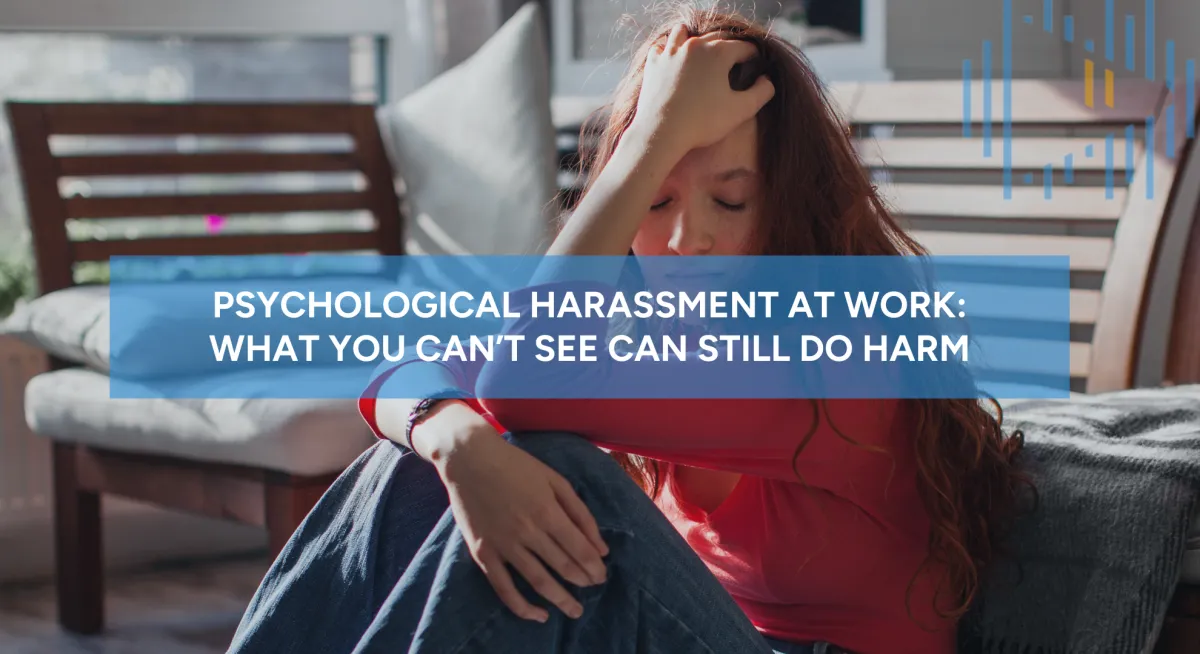
Psychological harassment at work: what you don't see is just as harmful
''Courage is not the absence of fear, but the triumph over it.''
Nelson Mandela
There aren’t always raised voices. No doors slamming. Sometimes, psychological harassment slips into the everyday work environment quietly—no drama, no outburst.
And yet, its effects are very real. Deep. Disruptive.
It deserves to be acknowledged, named, and addressed.

Seemingly harmless gestures that hurt
Repeated passive-aggressive remarks
Subtle but constant exclusion
Excessive workload imposed without discussion
Undermining comments in meetings
Taken individually, these behaviours can be brushed off as humour, clumsiness, or “normal” pressure. But when they’re repeated, they erode psychological safety. And no—it’s not about being “too sensitive.” It’s about respect and dignity.
An invisible but lasting impact
Loss of confidence
Chronic anxiety
Social withdrawal
Extended absences
Psychological harassment damages both people and teams. It drains energy, weakens motivation, and turns workplaces into unpredictable, stressful environments.
And it doesn’t stay at the office door:
It follows people home, disrupts sleep, makes social interaction harder, and spills into personal relationships. What happens at work often ends up living everywhere else, too.
This isn’t a distant reality—it’s what many people experience every day, often in silence, sometimes just a few feet away from you.
What can we do? Here are real (and non-generic) actions
🔹 Break the silence. If you witness something, ask a question, check in. Even a small gesture matters. Being an ally doesn’t mean fixing everything for someone—it means not looking away.
🔹 Raise awareness without dramatizing. Share a resource. Start a team conversation. For example: “How do we actually feel during team meetings?”
🔹 Lean on available tools. Resources like CNESST guides or the “Respect and Civility” framework by INSPQ offer helpful ways forward. At headfirst, we also offer training that equips teams—without blame or guilt.
🔹 Create safe spaces for open conversation. An anonymous feedback tool, a trusted point person, or even a suggestion box can all become powerful levers for change.
Conclusion: just because it’s subtle doesn’t mean it’s acceptable.
Psychological harassment is often silent. It leaves few visible marks but causes deep damage. And that’s exactly why we need to talk about it. Recognize it. And take action.
👉 Let’s speak up. Let’s be allies. Let’s share tools that make a difference.
At headfirst, we believe a healthy workplace starts here: with the courage to act—together.